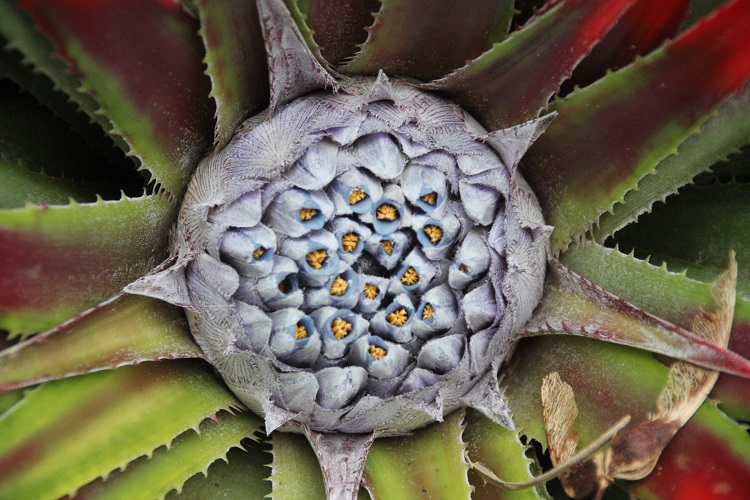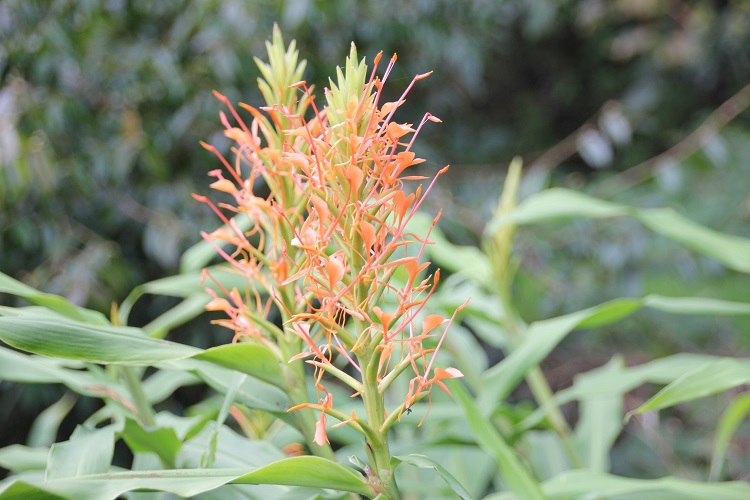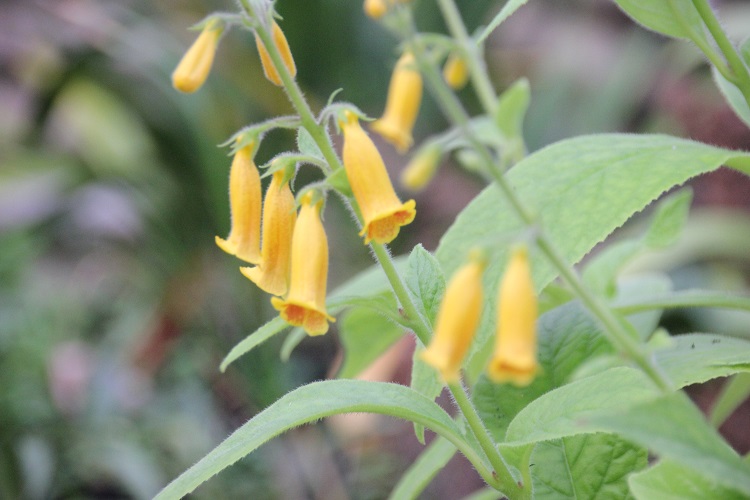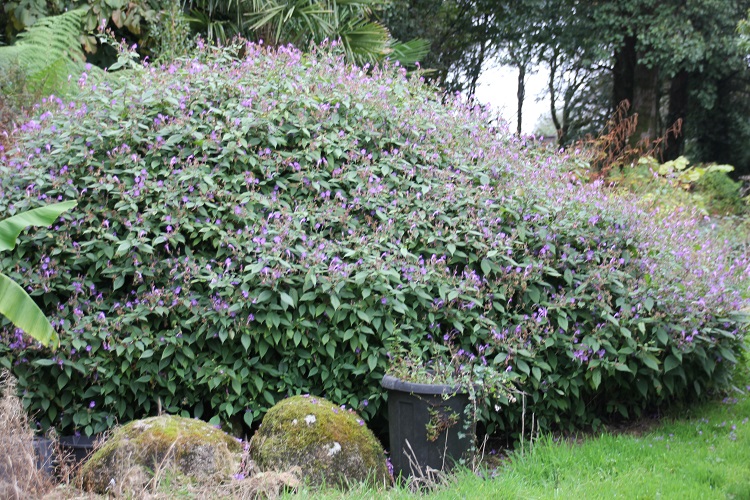JEARRARD'S HERBAL

19th October 2025
Fascicularia bicolor ssp. bicolor .
The self-deception of autumn is tottering around the garden in a fragile state. I can overlook the appearance of my own snowdrops,
flowering as they do in the greenhouse. Strange things happen in greenhouses, it would be foolish to deny it. Snowdrops growing in the open
are harder to brush off. In one way they are the delightful fluff of the Mediterranean autumn dangling languidly in the sun.
In my partners (cold) garden they are the cloven hoofprints of the devil of winter.
Self-deception is straining to keep control. Tra-la-la mes braves.
Fascicularia have enjoyed the heat and moderate drought of the year. F. bicolor bicolor is flowering on multiple rosettes,
something that it has never managed previously. I am delighted to have its noble presence in my garden. Notwithstanding, I cursed silently
when I found it growing in the pine-tree border. It was supposed to be the tall, elegant form of Ochagavia carnea (that which was once
distributed as O. lindleyana). I lost my stock plant years ago and was delighted when I was able to buy one back. A few red leaves have
alerted me to the noble presence of Fascicularia bicolor bicolor where there should be the pink inflorescence of Ochagavia.
Gardeners have insufficient expletives to express the tribulations of a compex and distinguished role. Bugger will have to suffice.

19th October 2025
Hedychium coccineum .
The garden is reliving the past few months as though casually flicking through the pages of summer's diary. The Hedychium
have had a sensational season of growth and they are following it with a season of flower that is politely exuberant.
Hedychium always promise fireworks at the end of summer but it takes a long, hot and dry season for them to deliver.
We haven't had it, the fireworks are a little damp. Still, H. coccineum is performing, something it doesn't always grant,
and if the frost holds off (until April perhaps) there are other reluctant flowerers that might light up the night with petalled recklessness.
This is a perfectly ordinary example of H. coccineum, it is labelled 'Burncoose' to identify the source and to keep it distinct from all of
the other perfectly ordinary forms of H. coccineum that I grow.
They say that madness is repeating the same actions and expecting the outcomes to be different. Planting the same rhizomes and expecting to see a distinction
comes perilously close. Perhaps the savage grip of winter will destroy the flowering canes and deny the possibility of further flowers.
It will also conceal the bubbling lunacy of the Hedychium grower.
Swings and roundabouts would be my conclusion.

19th October 2025
Titanotrichum oldhamii .
Just as I had settled on a decent definition of madness, Titanotrichum oldhamii flowers to trounce my foolish simplicity.
It has grown well this year but this is not the first time I have grown it. From memory, this is the third. Third time lucky perhaps.
Third time trying when I have killed it twice before isn't the sanest way of spending £20.
I have spent a lot of time fussing around it, I have tried hard this year and it has grown well. I have managed to keep it through the winter before
so, in more ways than one, things are looking good. It has produced an abundance of flowers - sometimes it abandons buds and grows little tubers on the flower stems instead -
and so this is a good year.
As it delivers this display there is a Lysionotus and a Hemiboea flowering on the bench beside it. I like the gesneriads, I would love to grow more
but I am mindful of the legion that I have killed in the past. I will return slowly to that particular madness.

19th October 2025
Strobilanthes pentastemonoides
My impression of Strobilanthes has always been that they root easily, grow fast and then vanish as rapidly. First impressions
last even when they are clearly unjustified. Strobilanthes attenuata (under whatever name is currently fashionable) has persisted with little
help from me for twenty years. S. nutans has claimed the space under an old Rhododendron with the dogged determination of a prospector in a gold rush.
I would have noted their unexpected survival with appreciation and thought no more about it. Strobilanthes pentastemonoides
has forced me into breathless admiration for the clan.
It was planted in the distant past when the herbaceous border was new, a rampant fluffy itinerant to fill space for a year or two.
It has matured into the stand-out feature of the border, a towering mound of foliage draped with a snug duvet of shining purple flowers.
I finally took cuttings this year. I must have more of it.




